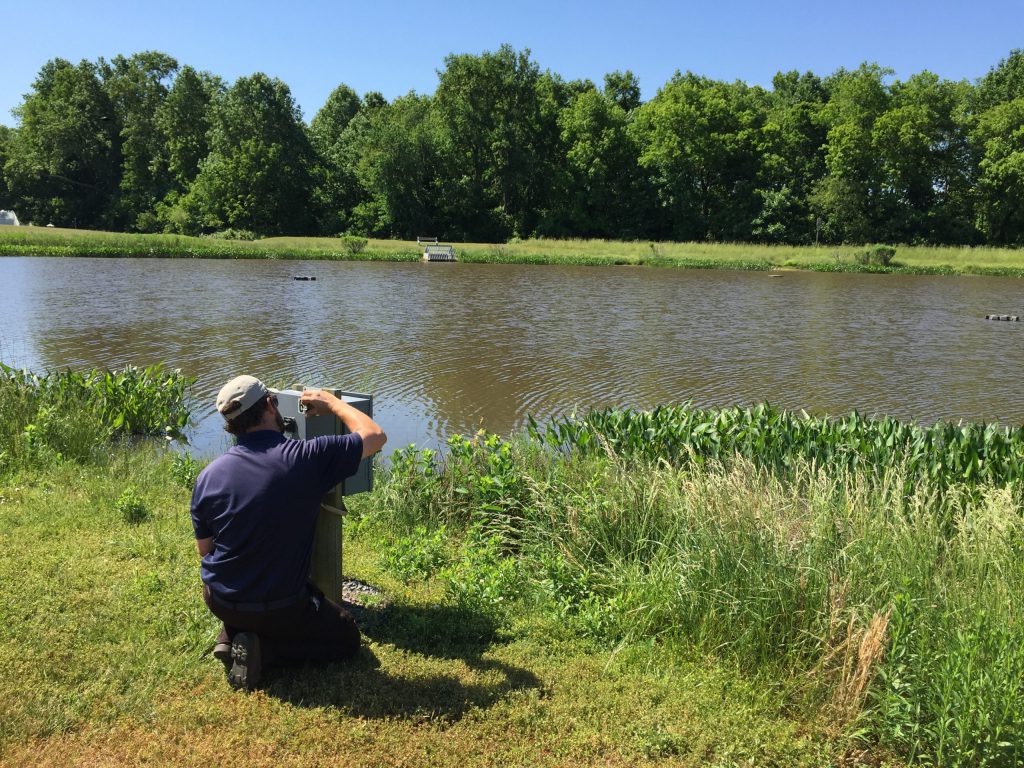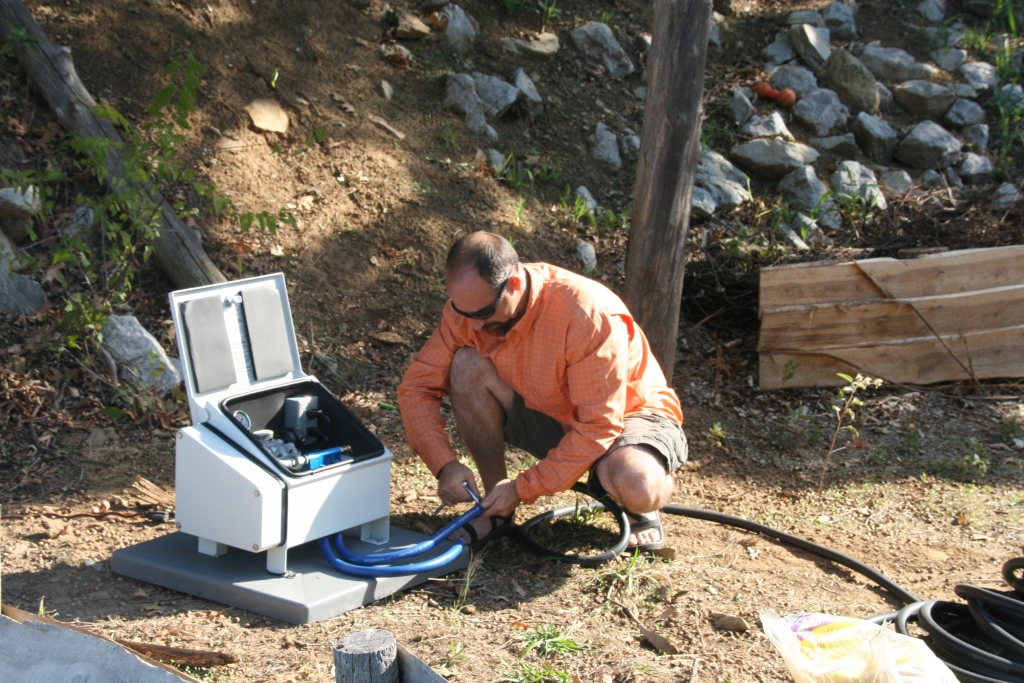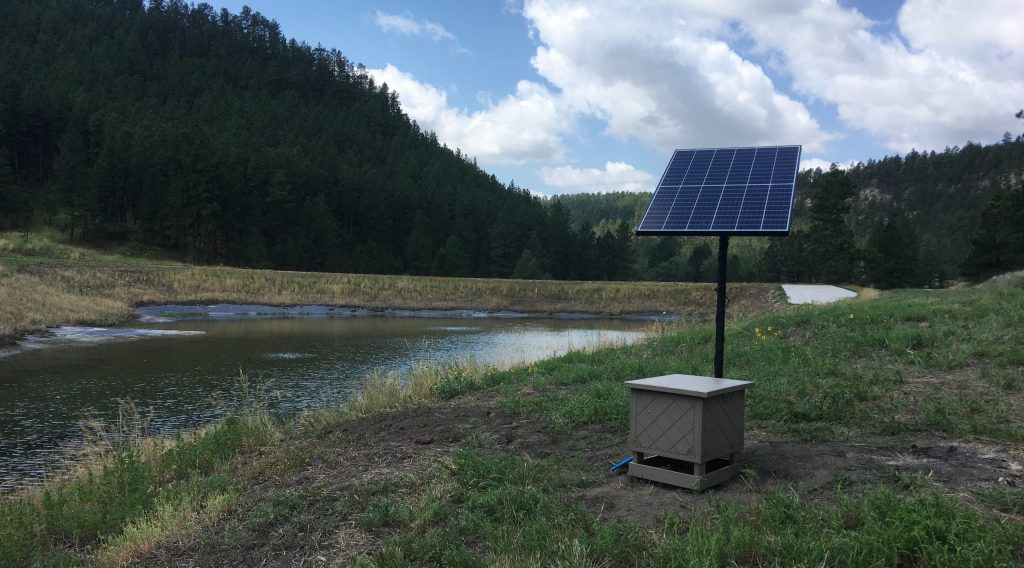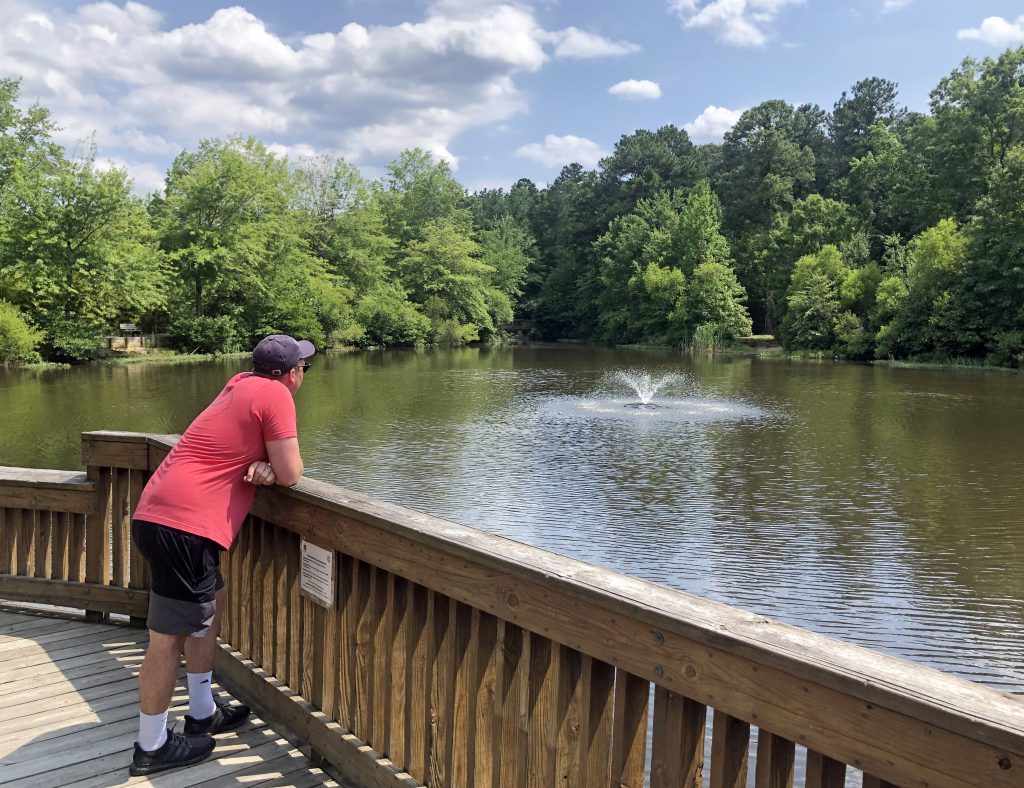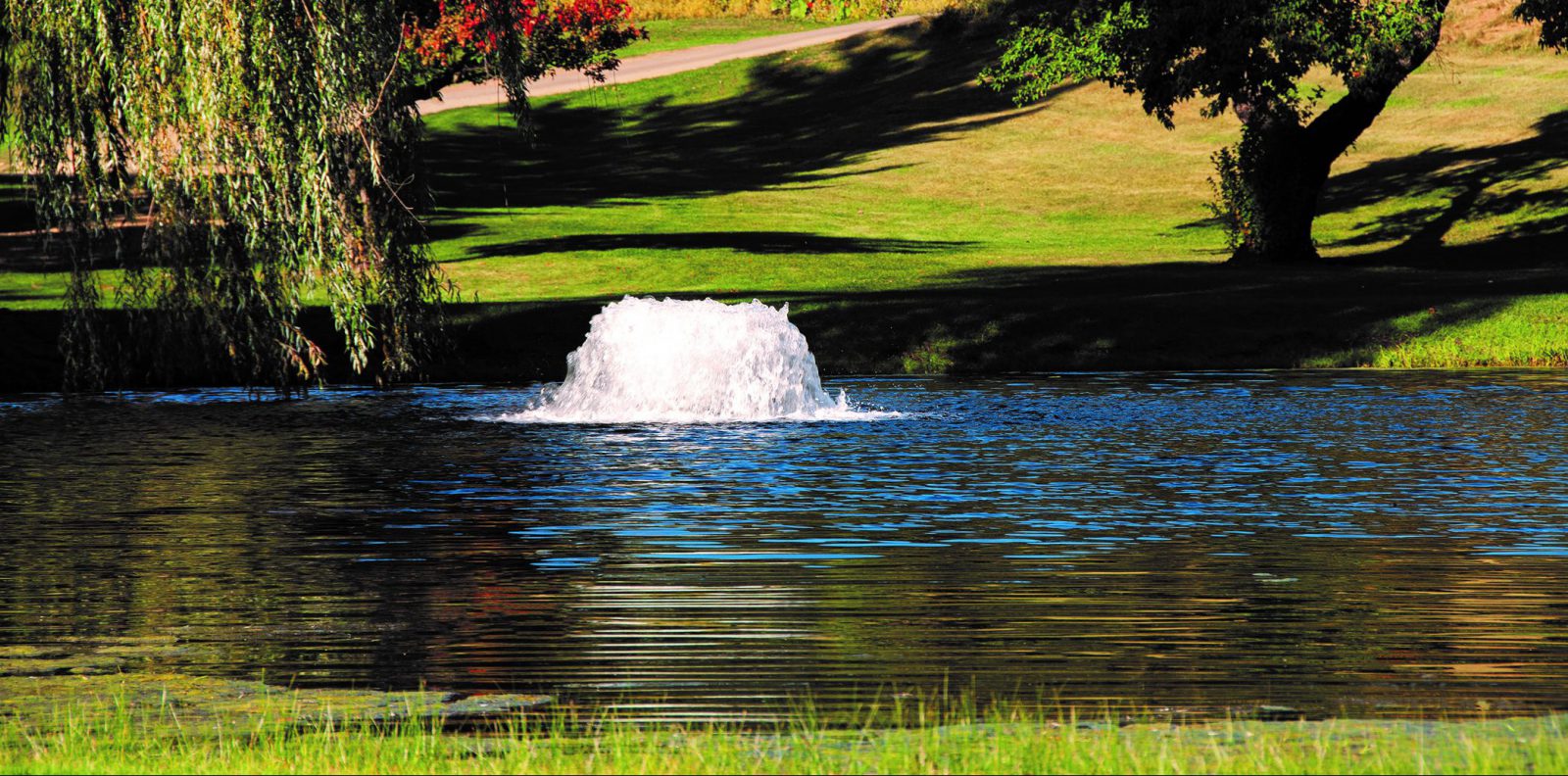
What You Need to Know About Running Electricity To Your Lake Fountain or Aerator
Lake fountains and aerators can be beautiful, functional accents for waterbodies of all shapes, sizes, and uses. As water sprays gracefully into the air or bubbles at the surface, it catches the eye while enhancing water quality. What’s more, lake fountains can be incredibly cost-effective to run, totaling as little as $2.50 a day in electrical expenses. Ready to make a splash around your home or community with a new lake fountain or aerator? Here’s what you should know about running electricity to your system.
Power Source
While these systems are usually simple to install, there are some important considerations before you begin. First, it’s necessary to identify your power source. Lake fountains and aerators must be plugged into a covered panel box or outlet. In many cases, one is already established, particularly for waterbodies in close proximity to homes and businesses. If a new power source must be installed, it’s recommended to partner with a licensed professional to ensure it meets local codes.
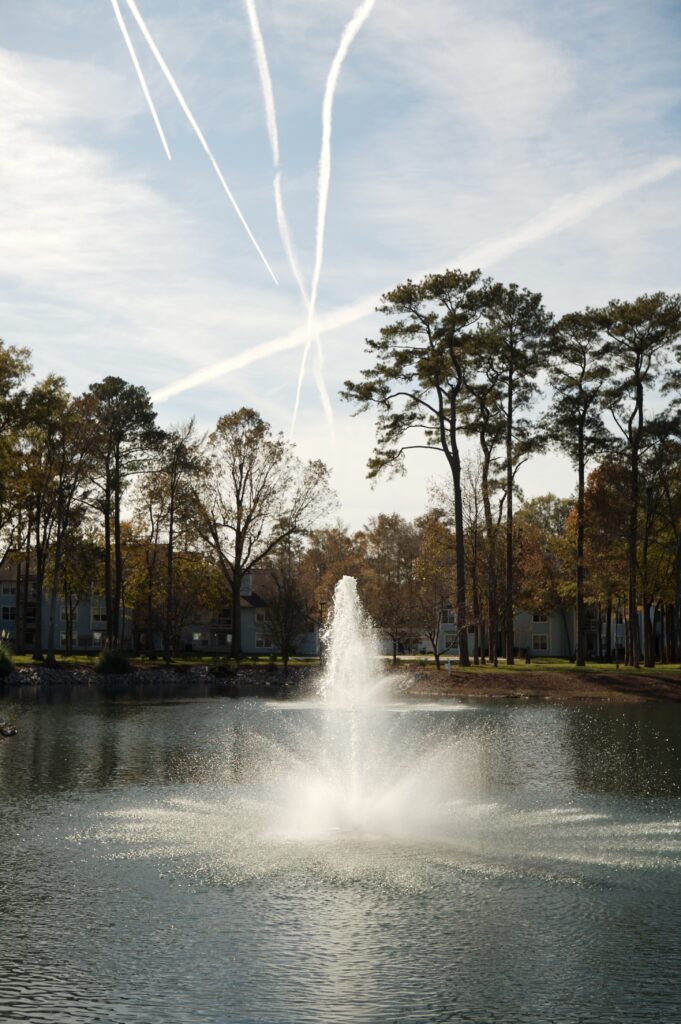
Voltage
It’s also important to determine the voltage that will be required to run the system. Submersed aerators, which pump surface air to the bottom of the waterbody, usually operate on a 120-volt system with a typical household plug.
Larger units that require greater horsepower to move water, like fountains and surface aerators, may require 240-volts – the same voltage used for most home dryers and water heaters. In less common instances, a 480-volt system may be needed, but this is more common for aeration systems used in industrial settings.
Property owners and managers have many size and aesthetic options when it comes to choosing a fountain, surface aerator, or submersed aerator. Choices can be more limited if the power source is only compatible with a 120-volt system; however, this size is often considered the most affordable. Decision makers can expect to spend approximately $2-3 for 12 hours of use. 240-volt systems generally cost $4-6 per day to operate.
Distance
Another key consideration is the distance between the waterbody and the power source. This is because the distance relates to the voltage drop from where power is established – the more power drawn, the bigger the cable must be and the more expensive it is per foot.
If there is no power source near ponds using a submersed aerator, owners can place the compressor cabinet near the power and run an airline to the pond up to 1,000 feet away. However, 240-volt fountains and surface aerators should not be installed more than 500 feet from the control panel to ensure they pull sufficient power.
Power cables are buried and sheathed in a conduit rated for underwater use. Likewise, certain manufacturers recommend covering the cable with additional barriers to protect against animals that may chew through it and cause it to be replaced.
Alternative Power Sources and Equipment
If there is no power source available, property owners and managers may elect solar-powered equipment, primarily for submersed aerators which require less horsepower. Though it is often more expensive upfront, the lack of operation costs helps save money over time. In rare instances, wind-powered equipment can also be used as an alternative power source for submersed aerators. As the windmill spins, it pumps air to the bottom of the waterbody. However, the system will stop working when the wind ceases.
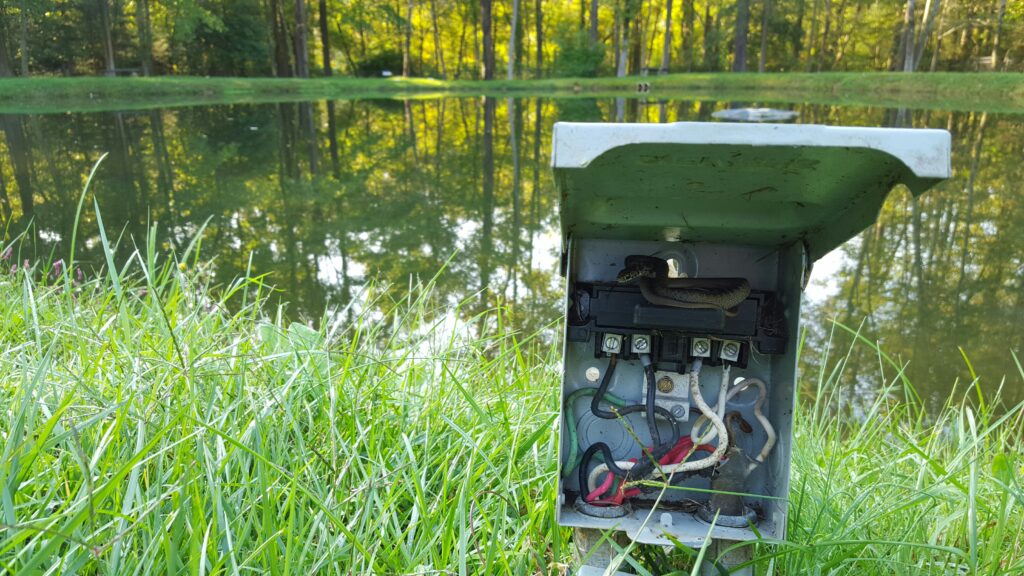
Maintaining Your Lake Fountain or Aeration System
Maintaining lake fountains and aerators is straightforward. As part of an Annual Management Program, aquatic specialists visually inspect the system regularly throughout the season, removing any build-up and debris, and looking for signs of damage to cables, panel boxes, or equipment. In northern regions of the country that experience long periods of freezing, professionals may recommend physically removing and storing fountains to prevent damage to the equipment. However, in less cold regions they can be excellent tools to maintain open water all winter long.
Enjoy Beautiful, Healthy Water
The benefits of fountains and aerators are vast – dissolved oxygen promotes healthy, robust ecosystems, it aids in the efficient decomposition of bottom muck and plant matter, and it helps keep lakes and ponds balanced. However, these tools are only one piece of a proactive management program. A holistic maintenance plan incorporates a variety of solutions, including water quality testing, nutrient remediation, biological bacteria, shoreline restoration, mechanical hydro-raking, and other strategies that support the longevity of the waterbody.
Lakes and ponds are amazing assets that can add value to a property, create recreational opportunities, and accentuate the natural beauty of the water. They should be a point of pride and serve as a gathering spot for friends, family and neighbors to connect and appreciate nature. By partnering with experienced aquatic experts, property owners and managers can rest assured that their fountains, aerators, and panel boxes are kept in peak condition so the water can remain safe and healthy for all to enjoy.
SOLitude Lake Management is a nationwide environmental firm committed to providing sustainable solutions that improve water quality, enhance beauty and preserve natural resources.
SOLitude’s team of aquatic scientists specializes in the development and execution of customized lake, stormwater pond, wetland and fisheries management programs. Services include water quality testing and restoration, algae and aquatic weed control, installation and maintenance of fountains and aeration systems, shoreline erosion control, muck and sediment removal and invasive species management. SOLitude partners with homeowners associations, golf courses, private landowners, businesses and municipalities. SOLitude Lake Management is part of Rentokil, a leading business services company, operating across the United States, Canada and Puerto Rico.
For more information, visit SOLitude Lake Management at solitudelakemanagement.com, and connect on Facebook, LinkedIn and Twitter.








